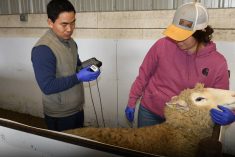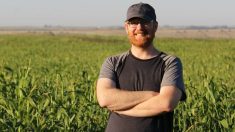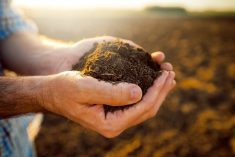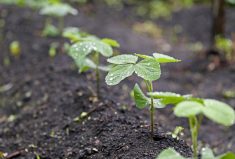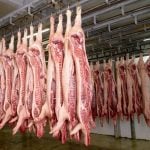Glacier FarmMedia – An Alberta company wants to turn poop from about 80 million worms into a natural superfood for the soil.
“Essentially, what we’re doing is using Mother Nature and creating a soil microbiome through our technology,” said Jamie DePape, co-founder and director of sales for Annelida Soil Solutions Ltd.
“And it might sound primitive, but what Annelida has done differently, and why we’re an ag tech company, is we’ve taken something that’s primitive to commercialization and really put some technology behind it.”
Read Also
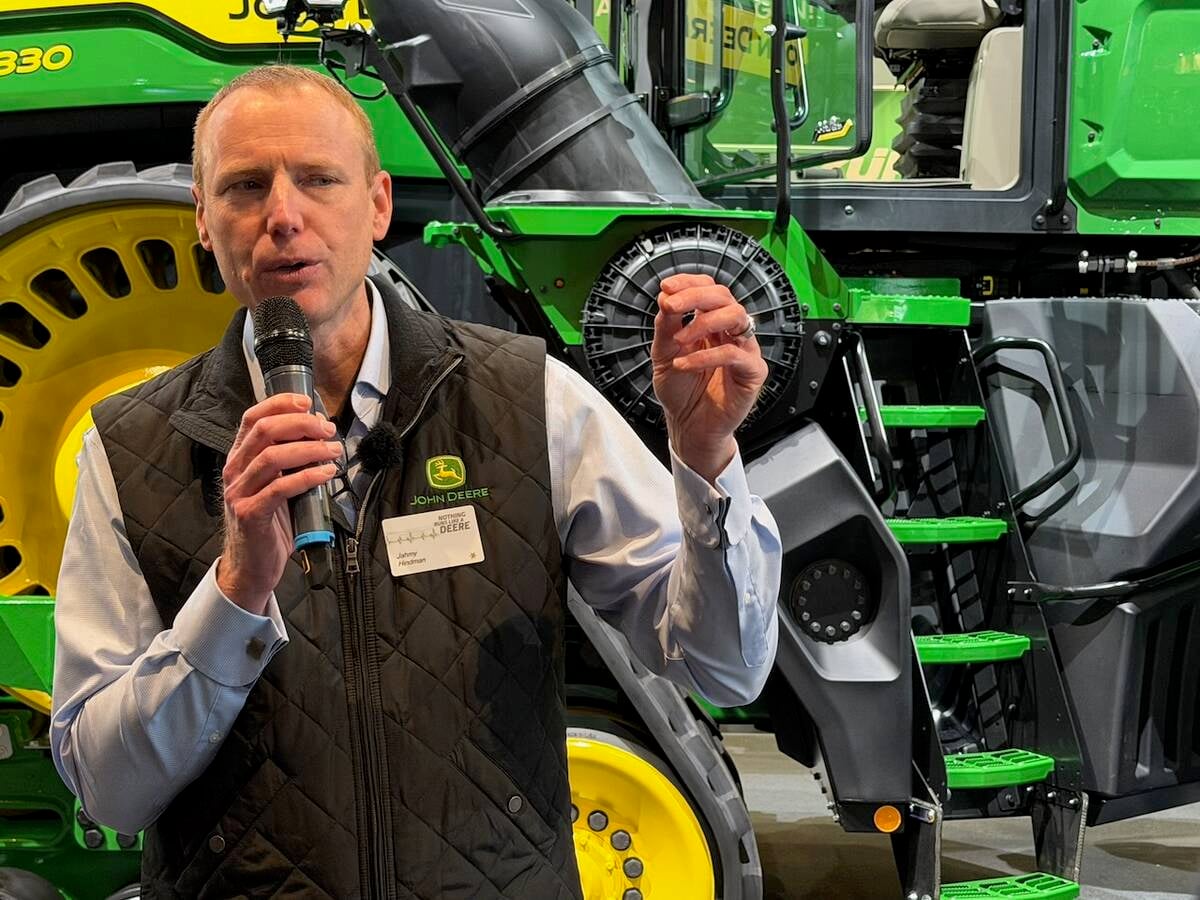
At Agritechnica, farm power options get more diverse
At Agritechnica 2025 companies showed growing diversity in agriculture machinery powertrains, including lots of talk about diesel-electric hybrid systems, especially from Zoomlion.
The company was honoured with an Innovation Award at the recent Western Canadian Crop Production Show in Saskatoon.
The company, which started in 2019, is named after the Latin word for segmented worms.
“Not too many people can shake the hand of a worm farmer, so it gets a good laugh right out of the gate, and then we’re able to engage.”
DePape said “nutrient efficiency and regenerative agriculture is the best way to describe what we’re trying to do here.” Regenerative agriculture is a type of farming that seeks to revitalize soil and minimize synthetic inputs by taking advantage of how plants, animals, microbes, soil, water and air naturally work together.
Annelida uses a mix of red wrigglers and Indian blue worms that are native to warmer climates. They are composting rather than burrowing worms and are typically found in places such as the rainforest floor, where they help break down decaying leaf and plant matter, said DePape.
“They don’t do anything to harm a plant. They’re actually in the support infrastructure of plants. That’s why they were chosen for this process, and so they’ll never attack roots or anything like that.”
The company’s 90,000 sq. foot facilities in Nisku contain about 80 million worms, which collectively weigh about 36,000 kilograms. They live in one-metre-deep worm beds that are each about 24 metres long by 2.4 metres wide and are vertically stacked like bunk beds up to several stories high.
The worms are fed about 10 types of organic waste that would otherwise go to landfills, including cardboard, used coffee grounds from restaurants, spent grain from breweries and leftover produce from grocery stores. These materials are mixed and turned into an optimized food for the worms, which is spread on the worm beds using automated gantries consisting of battery-operated wireless robots.
About 11,300 kg of waste per day are digested by the worms, which excrete about 75 per cent as castings or poop, said DePape. “We’re essentially feeding on the top storey and cutting from the bottom, and creating a soil microbiome that from the time you feed it to the time it comes out the bottom, it’s 45 to 60 days, resulting in an extremely high functioning stimulant and biology for the soil.”
Although the worms are the stars of the show, the composting process involves an enormous number of beneficial organisms, said co-founder and general manager Michael Launer.
“It’s the enzymes within the gut lining of the worms that create all those beneficial microbes and bacteria, “he said.
“And you know what? We know about as much of soil health and biology as we do about deep space or deep ocean exploration. We’re just learning so much more all the time because in one tablespoon of worm castings, there’s more organisms and bacteria than there are people on Earth.”
Scientists are slowly identifying different strains of bacteria and how they interact through the soil with plants, said Launer as he explained the difference between Annelida’s products and traditional chemical fertilizers.
“We’re actually not feeding the plant, we’re feeding the soil. We’re putting biology back into the soil, and the soil then feeds the plant.”
The worm castings are screened to remove impurities, after which a range of products are created, said DePape. He likened it to a dairy farm where milk is turned into products ranging from ice cream to yogurt.
“We just take the end product, being the casting or the vermicast, and then we take that and extract microbes and bacteria for different purposes and different products.”
They range from shelf-stable liquids to granulated pellets, which can be used for soil amendments that can be applied by conventional farm equipment, said DePape.
The result is a kind of superfood for the soil’s microbiome, which is a complex community of organisms ranging from worms, insects and fungi to bacteria that are responsible for much of the productivity of healthy soil, he said.
“We use the casting extract or the castings in a dry form to basically stimulate the microbiome.”
He described the effect on soil as similar to the motion of a flywheel.
“Once you get the wheel turning, we’ve got the weight of the flywheel so now it’s moving, and if we can give it a little bit more momentum, it helps carry that momentum.”
Subsequent treatments are adjusted to where the soil needs to go, said DePape.
“And then we further spin the flywheel, and we’re seeing year-over-year buildup of the microbiome and getting further efficiencies as well as drought resiliency, disease suppression and all of that by allowing Mother Nature to start filling those gaps.”
Launer said there is no single magic bullet because there is no single soil condition.
“There are several different products that we will pair with our biology to give farmers different results,” he said.
“Maybe they’ve got a really sandy soil, or maybe they’ve got a soil that’s alkalinic because with the overuse of conventional fertilizers, they’re salt based. And so, you get the salinity patches where the salt is actually killing the biology of the soil, and you get these patches that grow every year that not even weeds will grow on.”
He talked about a farmer who had been unable to raise crops within such a patch for about four years.
“And we treated it and at the end of the first season, after two treatments, his crop on that patch was within 65 per cent of what the rest of his crops were doing. It’s not 100 per cent… It takes time to build that biology back up.”
Launer said another benefit is that by reducing the use of chemical inputs such as fertilizers, farmers can lower their carbon footprint as well as their expenses.
The federal government set a voluntary national target of 2030 to reduce greenhouse gas emissions from fertilizer by 30 per cent.
Although Annelida has served customers ranging from greenhouses and turf companies to garden centres, it is seeking to expand its reach among producers, said DePape. It currently serves more than 60 farms, including growers of wheat and canola, that are mostly within Alberta and Saskatchewan, he said.
“Last year, I believe we hit about 70,000 acres. Our goal is to see upwards of half a million acres this year.”
– Doug Ferguson is a reporter for The Western Producer.



